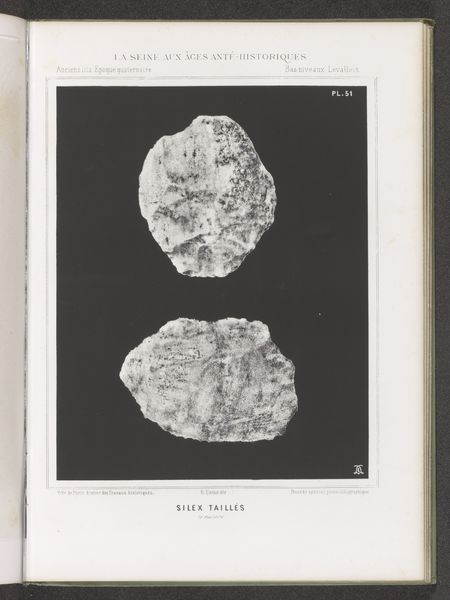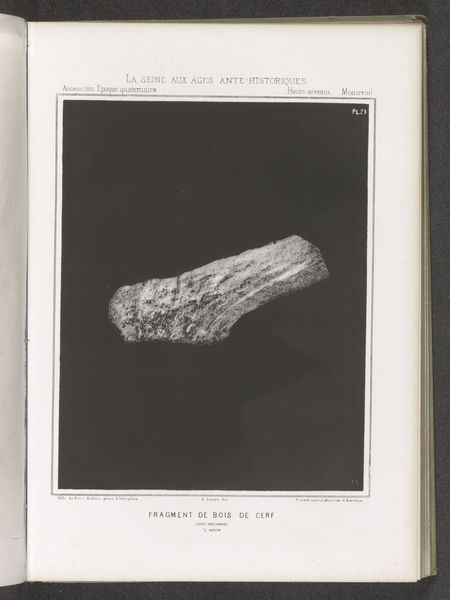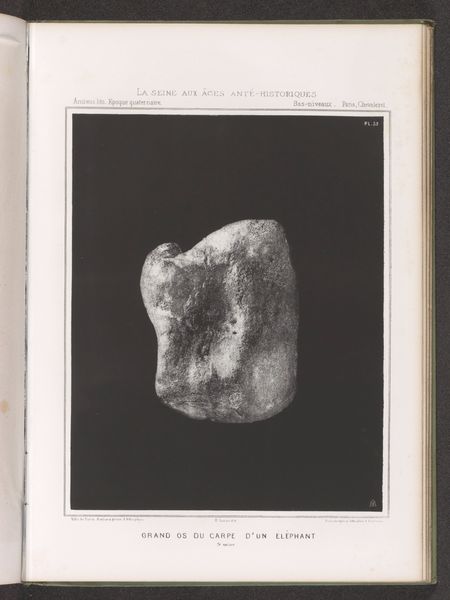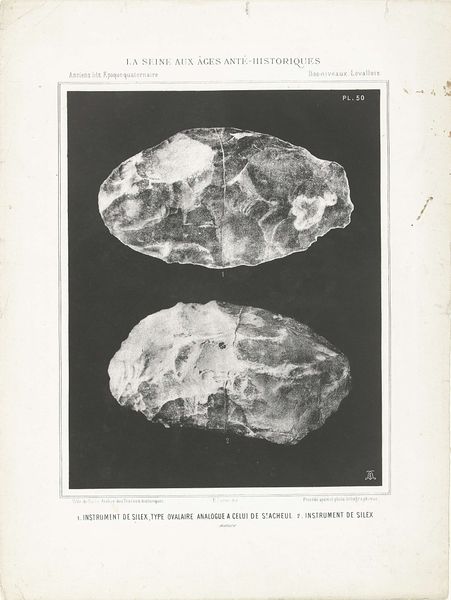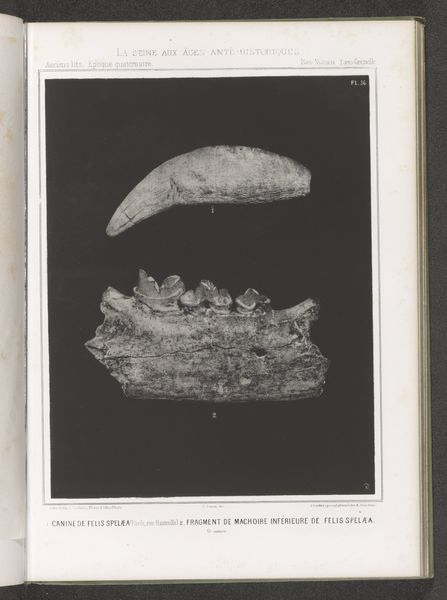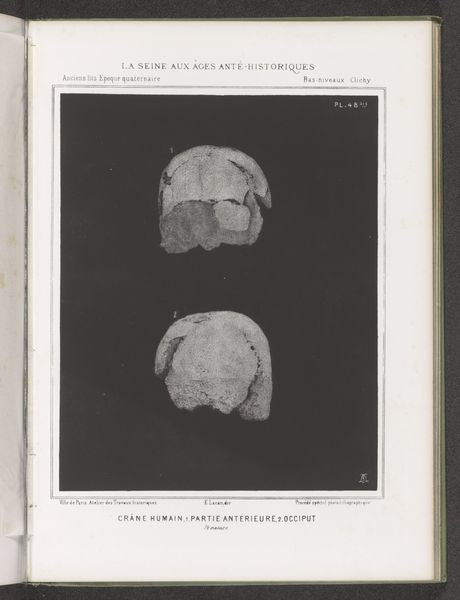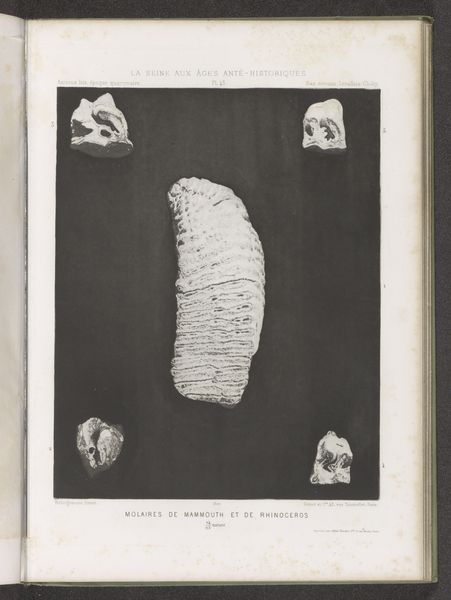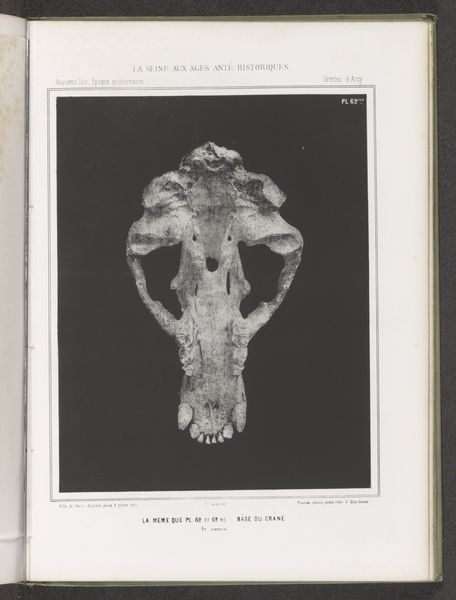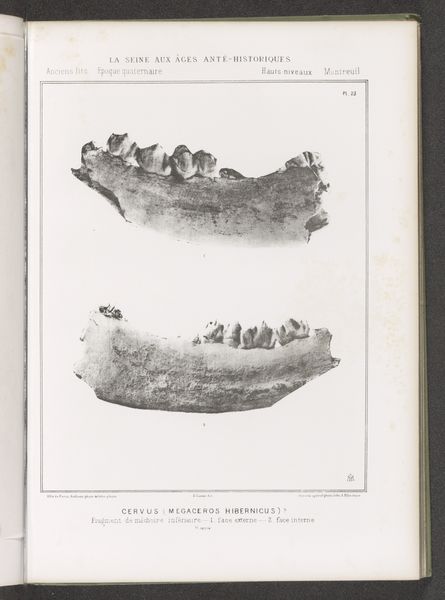
print, photography
# print
#
photography
#
geometric
#
ancient-mediterranean
#
academic-art
Dimensions: height 241 mm, width 190 mm
Copyright: Rijks Museum: Open Domain
Editor: This is a print of an old photograph entitled "Bovenste deel van de schedel van een muskusos" - or "Top of the skull of a muskox" made before 1869 by an anonymous artist. The stark contrast between the dark background and the bleached bone fragment really grabs my attention. How should we interpret this work? Curator: Let's first observe its formal elements. The central placement of the skull fragment immediately establishes dominance. Consider the texture: the rough, almost porous surface of the bone set against the smooth, solid black field behind it. It provides us with an almost geometric form against an amorphous mass. Notice, too, the faint inscription on a label adhered to the skull; a semiotic marker refusing any "pure" reading of the image. Editor: So, it's less about the muskox itself and more about how it's presented? Curator: Precisely. Focus on the interplay of light and shadow, the textures, the careful arrangement of elements within the frame. It speaks to a scientific gaze attempting to categorize and understand, freezing the muskox within a frame. Editor: The focus on formal properties really changes how I see this. Curator: Indeed. The photograph isn’t just a record; it’s an exercise in composition, texture, and form. This rigid display, emphasizing form and objecthood, transforms it into something more profound than simple documentation. The texture is less ‘animal’ and more a construction. What do you make of that label? Editor: It seems that through formal study of the photograph we're uncovering a certain degree of artifice... The label creates its own shadow too... Curator: Precisely. A self-reflective device embedded in the image. It gestures toward categorization but obscures understanding. Editor: I wouldn't have considered how important form is if you hadn't have mentioned the structural relevance in photography of science. Curator: Looking at the photograph for itself shifts one's comprehension of art from 'what' to 'how'.
Comments
No comments
Be the first to comment and join the conversation on the ultimate creative platform.
